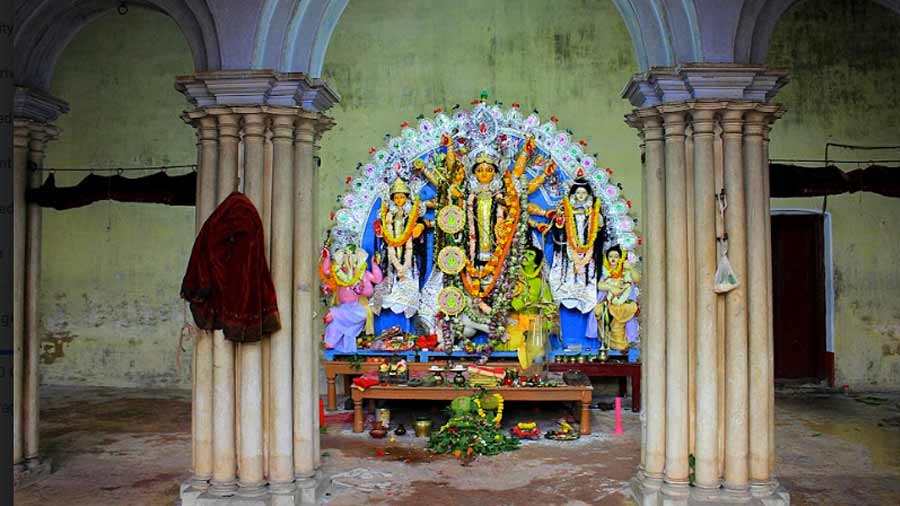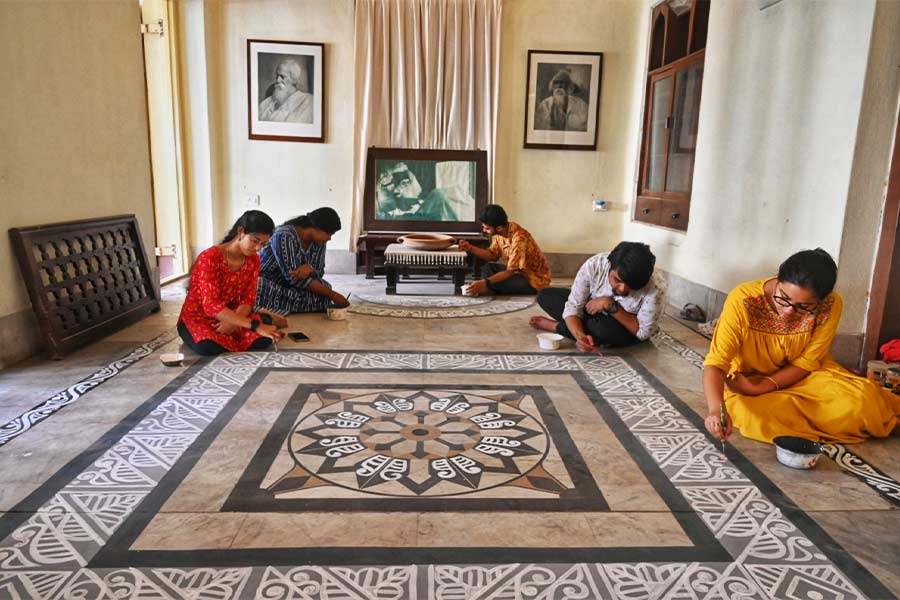Those interested in witnessing a traditional family Durga Puja, but with unconventional rituals, should pay a visit to the Chongdar family mansion at Guskara, in East Burdwan district. A Shraddha ceremony on Dashami, chanting abahan (invocation) mantras instead of bisarjan (immersion) mantra during Dashami, and considering Saraswati as a form of Goddess Tara are some of the unique aspects of this family puja.
The Chongdars of Guskara were a force to reckon in their heyday. According to Somantheswar Chongdar, a senior member of the family, the family had amassed 7.5 lakh hectares of land in their name and would even advise the Burdwan kings in administrative matters. Taraprasanna Chongdar, the great-grandfather of Somantheswar, had blessed the Maharajadhiraja of Burdwan with 1,001 gold coins during his coronation. According to Somantheswar, originally, the surname of the family was Chattopadhyay, which later changed to Chongdar. The family originated from Chattogram.
Though the present family members cannot recall when exactly the Durga Puja of the family began, they believe it to be some 400-years old and say it was initially performed in a small hut. Much later, when this palatial house was buit, it was shifted to the present-day Durga dalan.
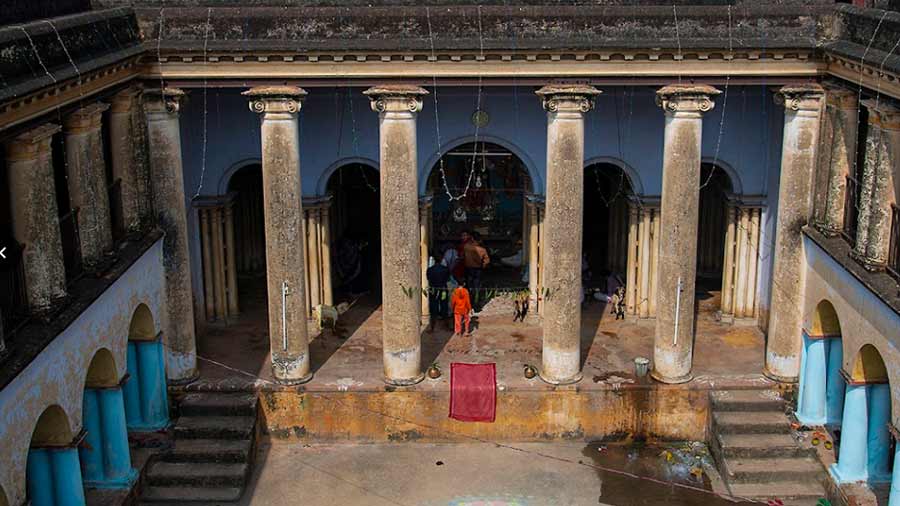
The Durga dalan of the mansion
Anjan Kumar KunduStanding in front of the pillared and now-discoloured thakur dalan of the Chongdar family, it is hard to imagine that Ustad Allauddin Khan had once performed on the courtyard of this char mahala mansion. Many other famous artistes have also visited this house to perform. Various cultural programmes, including dramas and processions, would be held here. The whole village, numbering around 50,000, used to be invited for a feast. All that remain now are memories of those days.
In the Chongdar household, it is the men who arrange everything for the ceremonies of the puja. The women cook bhog — the food to be served to the Goddess. Every day, 51 plates of food are offered to the goddess. During daytime, Gobinda bhog rice, three kinds of fried vegetables, two curries, moong dal, maacher tok (sour fish curry) and payesh (rice pudding) are served as offerings. On Ashtami, the goddess is offered khichuri. Evening offerings include payesh, luchi, arhar dal, naru, kheer, and chickpeas.
Kumari Puja is performed after the completion of Ashtami Puja. However, unlike in other households, in the Chongdar family, the girl is not pre-ordained, nor does she have to be a Brahmin. The girl is randomly chosen from those present at the thakur dalan as Kumari. This tradition has been in place since the inception of the puja.
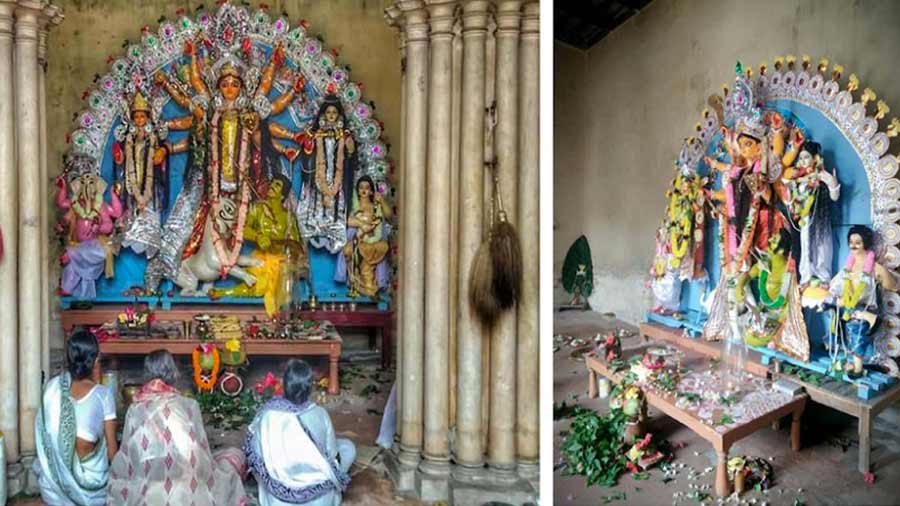
Women sit in front of the Durga idol in the thakur dalan
Mrittika ChongdarEarlier, a cannon used to be fired at beginning of Sandhi Puja, which was later replaced by a blank fire from a gun. Family members say this ritual has stopped in the last two years.
The goddess is worshipped as per Kalika Puran, following Shakta rituals. The idol of Saraswati stands apart from the others and her head is not adorned with a crown. According to Somantheswar Chongdar, Saraswati is worshipped in this household as Neel Saraswati, which is one of the eight forms of Goddess Tara — one of Dasa Mahavidyas. The Mahavidyas are a group of 10 Hindu Tantric goddesses.
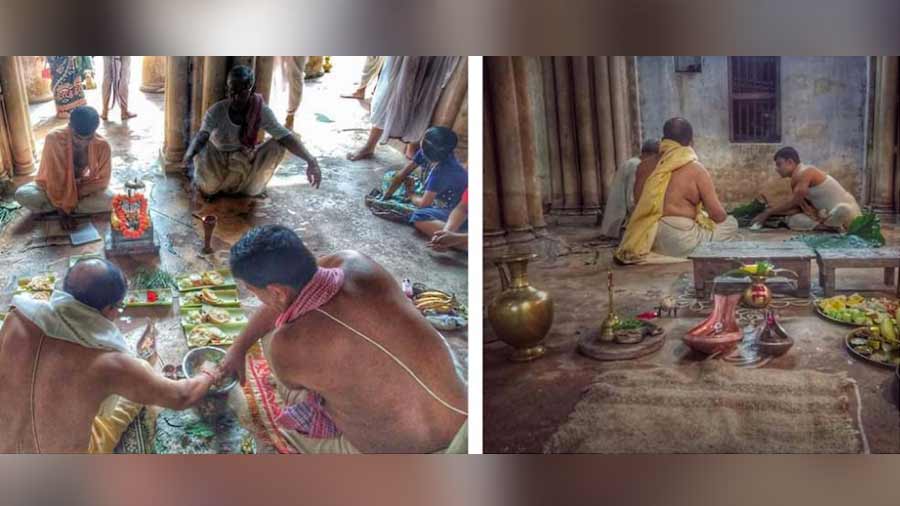
Priests performing the puja rituals
Mrittika ChongdarOnce, during a much -earlier puja, ancestor Chaturbhuj Chongdar fell ill. He died at the thakur dalan on Dashami, after Durga Puja was over. Hearing the news of his death, his wife Bidyadhari Devi arrived at the spot and she too died. The Shraddha ceremonies of both the family members were done in the thakur dalan. So, even today, after Dashami’s puja is over, Shradhha rituals of the two family members take place at Chongdar household.
On Dashami, the Navapatrika is immersed into a waterbody. But stepping away from tradition, abahan (invocation) mantras are chanted. The ghot (sacred earthern pot) is not immersed but reinstated in the temple of Bhairabnath – the family deity. Next year, during Sashthi, holy water is poured into the ghot and it is reinstated back in the Durga dalan on Saptami.
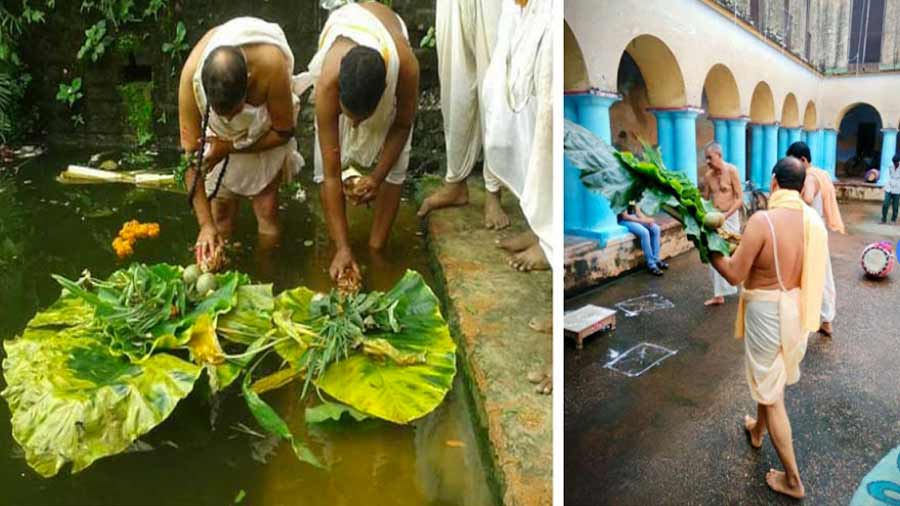
Navapatrika rituals of the puja
Mrittika ChongdarThough most family members stay in faraway places, all visit their ancestral home during Durga Puja. The present generation is making their utmost effort to preserve the tradition of the puja in Chongdar family of Guskara.
Guskara is 136 km North West of Kolkata. One can easily drive down to Chongdar house from Kolkata during Durga Puja.


